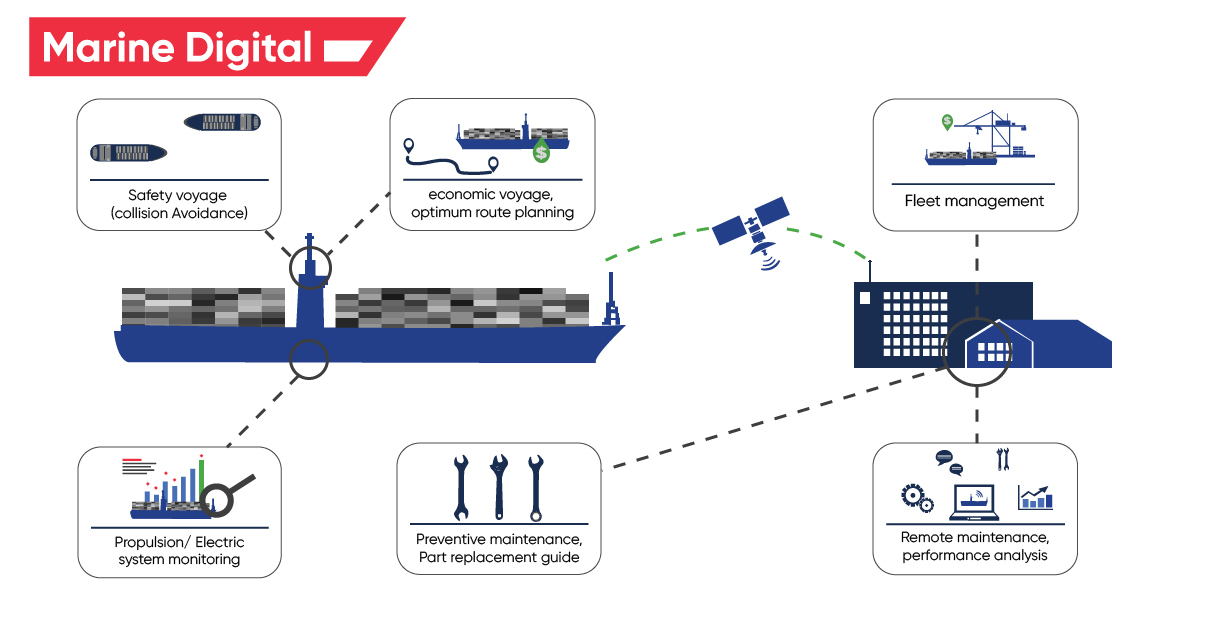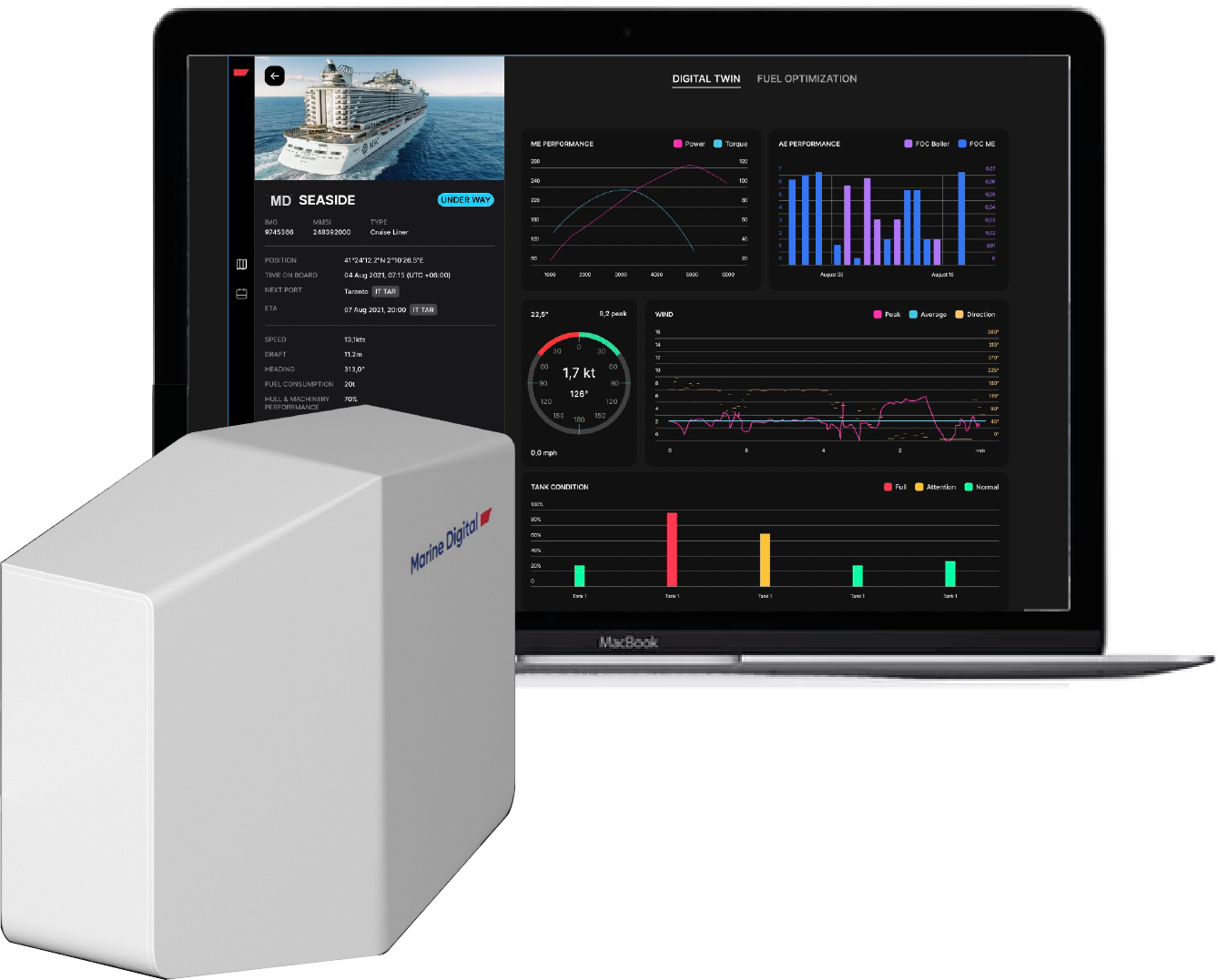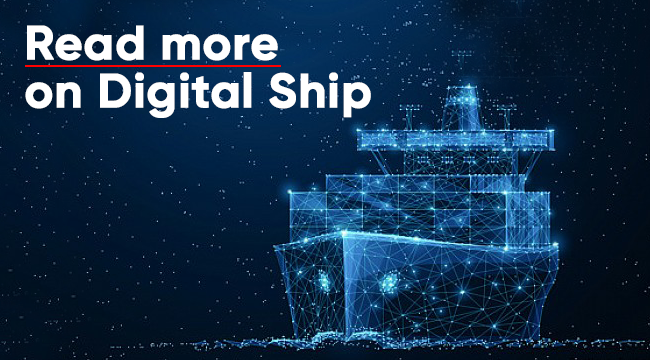SMART SHIP AS ONE OF THE TRENDS IN MARITIME
A new era is calling us. Smart ships will comprise of digital information, computer coding, and new technology infrastructure which is also the driver of the modern world. These drivers will inevitably innovate and push the supply chain on a sustainable and greener side. Many of the commercial contracts within the world may become smart contracts coded by computers. Everything will be jointly known as "smart shipping".
Interpreting the 2017 proposal by a no. of member states, the Maritime Safety Committee (MSC) of IMO agreed to make changes in its agenda regarding the issue of marine autonomous ships. However, it was in the form of a scoping exercise to determine how the safe, environmentally sound, and secured operations of Maritime Autonomous Surface Ships( MASS ) might be included in the instruments of IMO. Following that proposal, IMO's Strategic Plan of 2018-2023 includes "Integrate new and advancing technologies in the regulatory framework" as one of its pivotal Strategic Direction which highlights the balancing benefits of the advancing technology with safety and security concerns, cost potential, environmental impact, and trade facilitation overseas, both onboard and ashore.
IMO ON SMART SHIPS
To tackle the situation of cost competitiveness and transportation decline due to major logistics competition, shipping companies are reducing crew members. Moreover, the hype about efficiency improvement and carbon reduction in maritime industry has increased the attention to artificial intelligence. Therefore, the demand for automation in navigation and control technology is highly upsurging to operate the shipping smartly, safely, and economically. Furthermore, the progress in intelligence information technology, known as the core of the 4th industrial revolution, is promoting the visualization of autonomous ships. Countries such as China, the EU, Korea, Japan, etc. with the increased availability of these technologies are shaping the development of eco-friendly autonomous ships in virtue of the private-public collaboration.
Smart Ships revolutionize vital aspects: ship designing and operations, redefining the global maritime industry and the roles of primordial elements in it; with implications for shipbuilders, shipping companies, ship owners, and maritime systems providers, as well as the other sector companies producing the technology. The real-time constant remote monitoring of vessels globally will see ships become safer, more efficient, more trustworthy, and more closely integrated into the worldwide supply chains generating revenue aid with a higher bonus of cost-savings.
Smart Ships revolutionize vital aspects: ship designing and operations, redefining the global maritime industry and the roles of primordial elements in it; with implications for shipbuilders, shipping companies, ship owners, and maritime systems providers, as well as the other sector companies producing the technology. The real-time constant remote monitoring of vessels globally will see ships become safer, more efficient, more trustworthy, and more closely integrated into the worldwide supply chains generating revenue aid with a higher bonus of cost-savings.
SMART SHIPS: A NEED

Smart Ships, taking into account the applications of worldwide economic concepts and addressing the maritime sector regulations, aims to supply multi-layer optimization in fuel consumption, CO2 and carbon emissions control, and energy efficiency when full-fledged implementation is completed. It'll capitalize on available COTS technologies and can deliver an ICT & IoT-enabled holistic cloud-based maritime performance & monitoring system, for the whole lifecycle of a vessel, aimed to fully optimize the energy efficiency, emissions reduction, and fuel consumption, with regards to introducing circular economy concepts within the maritime field.
• AI Will Enable Ships to achieve a Greater Level of Autonomy and Sailors to possess a far better understanding of their Vessels. - AI (Artificial Intelligence) is a machine-based intelligence. AI refers to a computer-based perceptive which thinks and solves a drag on its own, that is, this is often perceptive and self-aware AI. Weak AI, on the opposite hand, doesn't even have intelligence but imitates intelligence employing a set of pre-prepared rules. samples of the foremost representative AI include autonomous vehicles, diagnosis, art, proof of mathematics, and games.
• Usage of AI Applications in Ships Helps in Eliminating Human Errors and Avoids Accidents - It is expected of the smart ships to lessen the marine accidents out of human errors by eliminating the risk through better decision-making algorithm and efficient decision-handling systems.
• Smart Contracts Enable Transparent Tracking of Shipments throughout the entire Shipping Value Chain - A more data-centric approach will expand the worth chain whilst potentially minimizing maintenance costs. Moreover, it can imbibe safety and efficiency at a better level in the operations and like-wise strategies.
• Augmented Reality in conjunction with Big Data Analytics will Provide an Immersive and Complete User Experience for Ship Navigation. - Augmented reality could work as a live view of the physical, real-world environment whose elements are visualized by a computer-generated sensory input like graphics, videos, and GPS data. The technology functions by enhancing the present perception of reality against the virtually perceived one.
• Sensors and Connected Systems will end in the Generation of Vast Amounts of knowledge to assist in Optimize Vessel Operation. - Smart sensors and satellite communication can facilitate an integrated network between onboard and on-shore systems and permit an outsized amount of condition data to be evaluated in real-time. There are different types of sensor data available during a ship like position, speed over ground, wind speed, fuel flow, shaft torque, shaft RPM, and emission data.
• Insights Generated from Big Data Enable Better deciding across Functions on Ships also as Ports. - Big data analytics also can be applied today to deal with current challenges, delivering enhanced safety, efficiency and productivity. Within the next 5-10 years, the mandatory adoption of ECDIS, incoming EU MRV legislation, and therefore the market drive for transparency and greater ship-shore connectivity will see the industry rely increasingly on the transmission and sharing of knowledge. The smart solution is to implement systems that will automate much of this to extend productivity and reduce man-hours
• Adoption of Cloud Makes easier workforce for both off and onshore in terms of Operations, Communication and Collaboration - The cloud service, which provides users with the IT resources that they have anytime and anywhere via wired and wireless mobile terminals and therefore the Internet, is attracting attention as a key industry within the 4th technological revolution. A cloud service is an on-demand service that gives Internet-based resources, software, and knowledge infrastructure.
• Cloud Enables Shipping Companies to take care of Centralized Data Management Systems and Apply Data Policies between Global Locations - Cloud services are generally divided into public, private, and hybrid supported service targets. the general public service is managed by the third service provider for the unspecified majority. It restricts services by fixing private policies for data that don't want to be shared and provides information that's necessary to share with the stakeholders.
• AI Will Enable Ships to achieve a Greater Level of Autonomy and Sailors to possess a far better understanding of their Vessels. - AI (Artificial Intelligence) is a machine-based intelligence. AI refers to a computer-based perceptive which thinks and solves a drag on its own, that is, this is often perceptive and self-aware AI. Weak AI, on the opposite hand, doesn't even have intelligence but imitates intelligence employing a set of pre-prepared rules. samples of the foremost representative AI include autonomous vehicles, diagnosis, art, proof of mathematics, and games.
• Usage of AI Applications in Ships Helps in Eliminating Human Errors and Avoids Accidents - It is expected of the smart ships to lessen the marine accidents out of human errors by eliminating the risk through better decision-making algorithm and efficient decision-handling systems.
• Smart Contracts Enable Transparent Tracking of Shipments throughout the entire Shipping Value Chain - A more data-centric approach will expand the worth chain whilst potentially minimizing maintenance costs. Moreover, it can imbibe safety and efficiency at a better level in the operations and like-wise strategies.
• Augmented Reality in conjunction with Big Data Analytics will Provide an Immersive and Complete User Experience for Ship Navigation. - Augmented reality could work as a live view of the physical, real-world environment whose elements are visualized by a computer-generated sensory input like graphics, videos, and GPS data. The technology functions by enhancing the present perception of reality against the virtually perceived one.
• Sensors and Connected Systems will end in the Generation of Vast Amounts of knowledge to assist in Optimize Vessel Operation. - Smart sensors and satellite communication can facilitate an integrated network between onboard and on-shore systems and permit an outsized amount of condition data to be evaluated in real-time. There are different types of sensor data available during a ship like position, speed over ground, wind speed, fuel flow, shaft torque, shaft RPM, and emission data.
• Insights Generated from Big Data Enable Better deciding across Functions on Ships also as Ports. - Big data analytics also can be applied today to deal with current challenges, delivering enhanced safety, efficiency and productivity. Within the next 5-10 years, the mandatory adoption of ECDIS, incoming EU MRV legislation, and therefore the market drive for transparency and greater ship-shore connectivity will see the industry rely increasingly on the transmission and sharing of knowledge. The smart solution is to implement systems that will automate much of this to extend productivity and reduce man-hours
• Adoption of Cloud Makes easier workforce for both off and onshore in terms of Operations, Communication and Collaboration - The cloud service, which provides users with the IT resources that they have anytime and anywhere via wired and wireless mobile terminals and therefore the Internet, is attracting attention as a key industry within the 4th technological revolution. A cloud service is an on-demand service that gives Internet-based resources, software, and knowledge infrastructure.
• Cloud Enables Shipping Companies to take care of Centralized Data Management Systems and Apply Data Policies between Global Locations - Cloud services are generally divided into public, private, and hybrid supported service targets. the general public service is managed by the third service provider for the unspecified majority. It restricts services by fixing private policies for data that don't want to be shared and provides information that's necessary to share with the stakeholders.
WHAT IS A SMART SHIP?

Smart Ship technology will increase the volume of data to optimize shipping operations and meet processing requirements. IMO's GNG strategy aims to redduce the shipping industry's total carbon emissions by 40% by 2030.
While the maritime industry is functioning towards LNG Fuel, Dual fuel engines, and style modifications, optimizing fuel utilization across vessel equipment is critical for reducing operational costs. Smart Ship's will enhance the ability for the 10-20 years old vessels also as well as the new ships to fetch complete fuel data onboard. Marine data analytics gives the required insights supported loaded or ballast conditions, impact of vessel speed, and other ship parameters on fuel consumption in commercial and environmental conditions.
OTHER ADVANTAGES OF A SMART SHIP
Fuel optimization
Protecting vital equipment and maximizing vessels' operational efficiency are key drivers for ship owners. As environmental regulation becomes more stringent and widespread, compliance becomes more challenging. Amidst the drive for operational efficiency, effective condition monitoring tools techniques become increasingly important in helping operators manage, avoid or mitigate these costly issues. Over the last decade, online condition monitoring technology has advanced at a rapid pace. The evolution of the practice of condition monitoring, from the days of engineers physically examining equipment and relying on their senses and intuition, to the sophisticated online sensor technology available today, has enabled operators to plan and manage maintenance requirements with the least possible impact on schedule and cost.
Conditioning monitoring
Vessel turnaround time takes a huge concern regarding the increased efficiency of developing technology to forecast routes and optimum speed recommendation. Ports receiving data stats regarding a vessel can highly implement those to guide other ships which grossly reduces the time for which a vessel stays at the port. Ship routing themselves according to the fuel-efficient route reduces the transit time, enhancing the chances of delay which are usually reported now. OOCL credits the whole IT sector and this advancing technology for granting them 83.3% vessel reliability, making them the first to do so.
Vessel turnaround time
Ships are getting increasingly complex with more and more systems needing more and more skilled managers, engineers, and operators. Remote and autonomous operations could see the transfer of seafaring jobs, requiring high levels of education and skills, from sea to remote operations centers ashore and make them more attractive to young people entering the industry. The sensors combined with algorithms needed for robust decision support systems. Of course, this does not mean that crew costs will be reduced. Currently, there is a constant shortage of qualified seafarers and personnel onshore, so we will see the transformation of seafaring jobs.
Crew and management

In Marine Digital we develop the smart ship solution: hardware and software complex that accumulates the AMS, NMEA, and other sources (incl. analog data sources) data to provide better analytics for vessel performance monitoring, maintenance prediction on vessel and navigation purposes
PROSPECTS OF A SMART SHIP
Starting from CSIC (China) launching the unmanned freighter, Japan also launched a Smart Ship Application Platform project. Europe started Munin, to fully develop an unmanned automated vehicle by 2035, Rolls-Royce has the same view by 2035. Yara Birkeland and Kongsberg are together aiming to replace 40,000 trucks by jointly producing automated maritime delivery, whereas Hyundai (Korea) is working on producing the latest ICT technology for maritime. Finland is creating AAWA comprising companies such as Inmarsat and DNV-GL. With other big names like Maersk and IBM in the investing list, and also after being in the degree 2 levels of automation as said by IMO, the next 5 years may witness a fully Automated Vehicle sailing. Degree 4 is the level to reach.
The voyage is a long one, expected fully autonomous shipping line predictions are ranging from 10-30 years. The situation will be challenging when Smart Ships will sail along the traditional analog shipping lines. Smart Ships are far, yet not so far.
The voyage is a long one, expected fully autonomous shipping line predictions are ranging from 10-30 years. The situation will be challenging when Smart Ships will sail along the traditional analog shipping lines. Smart Ships are far, yet not so far.
Author: Ritbik Kumar

TOP 5 factors contributing to lower fuel costs for Shipping companies
Get a presentation with a full description of the features and free pilot project with trial of Marine Digital FOS for 2 months
"Clicking the button, you consent to the processing of personal data and agree to the privacy policy"

Get an overview "The Pathway to Zero Carbon Shipping:
IMO Compliance and CII Optimization through SEEMP" on email and download it for FREE! Leave your email now!
"Clicking the button, you consent to the processing of personal data and agree to the privacy policy, as well as consent to subscribe to the newsletter. "
Аdvantage of Fuel Optimization System from Marine Digital:

Marine Digital FOS can be integrated with other system and third-party's solutions through the API. To implement vessel performance monitoring for any vessel, we are using mathematical algorithms, machine learning and the same equipment as in FOS. The more data we collect from vessels, the more precise reports and recommendations our system will perform according to your individual requirements in fleet management.
If you have any questions about the solutions and the Marine Digital System platform, write to us, we will be happy to answer
If you have any questions about the solutions and the Marine Digital System platform, write to us, we will be happy to answer

Increased business process speed

Reducing to zero the number of errors

Best offer to the clients

Reduction in operating expenses
Have a questions?






